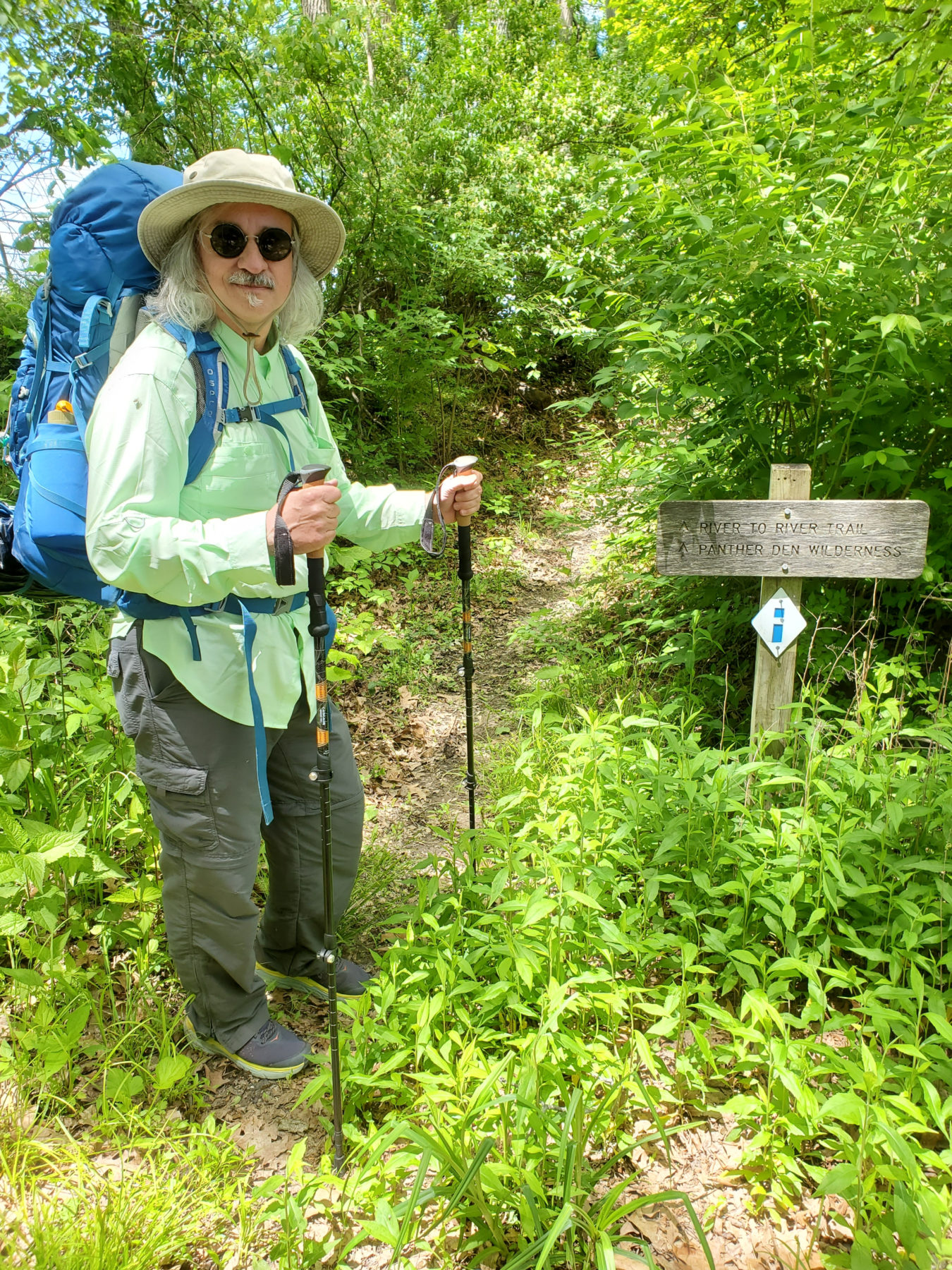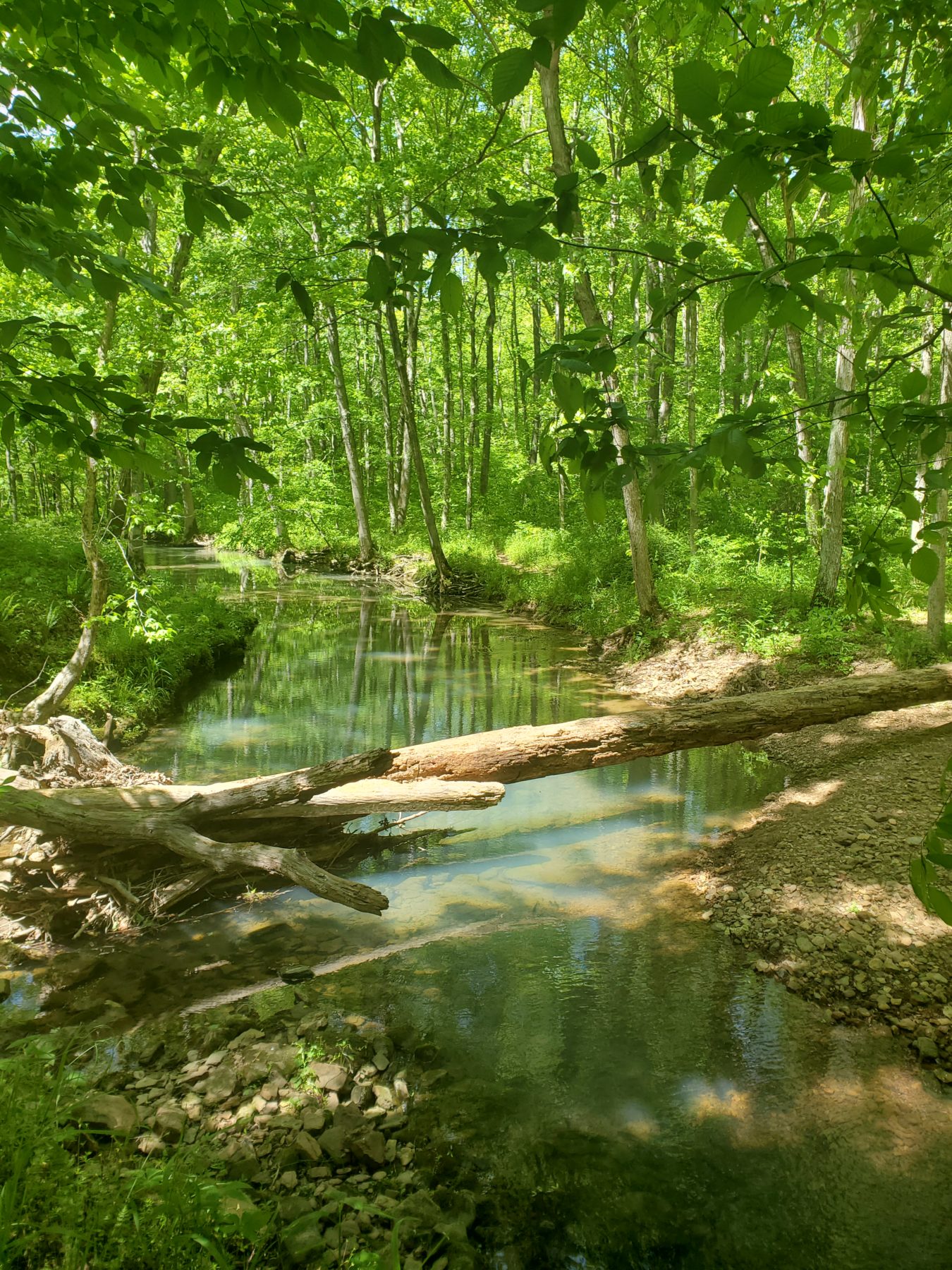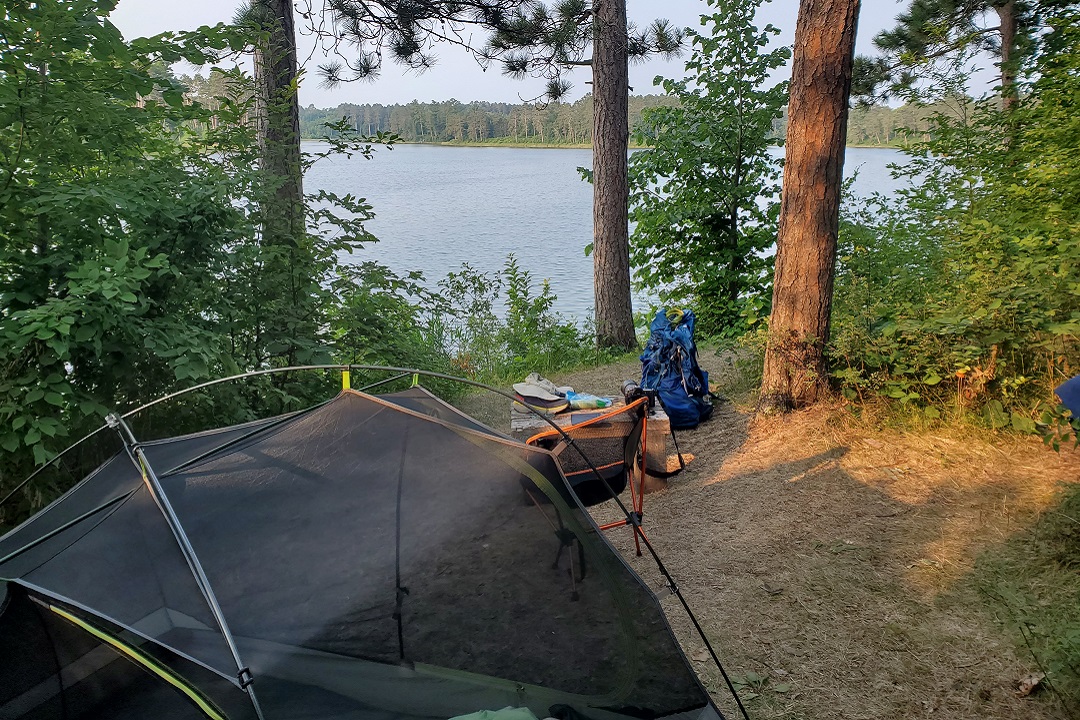I’ve done my fair share of hiking but only as day trips. I’ve felt pings of envy when I heard stories from people who had trekked deep into the Arctic or spent weeks along mountain trails. I never saw myself as the kind of person who would hike the length of the Appalachian Trail, but I thought it would be fun to backpack for a few days.
I’ve had experience with wilderness camping but always from a canoe. I wanted to get comfortable carrying what I needed on my back, so I could break free from car camping when I’m not in the mood to hear my neighbors argue about who forgot to pack the toilet paper. So, I got to work figuring out what I needed to do to arrange my first backpacking trip.
I got a lucky break when I found “The Ultimate Hiker’s Gear Guide” by Andrew Skurka on the $10 rack at a bookstore. At the beginning of the book, Skurka asks an important question: Are you primarily a hiker or primarily a camper? The answer will shape the kind of trip you plan and what kind of gear to pack. My answer: I’m a hiker.
Skurka’s book was a great help, but it’s so full of information that I felt I needed to talk to someone in person to make sense of it all. I contacted the Alpine Shop in Kirkwood, Missouri, and set up a time for a Backpacking 101 session with Elliot Bulejski. Bulejski has backpacked both the Appalachian and Pacific Crest trails, so he was a great resource. For 90 minutes, he patiently walked me through backpacking basics. It was enlightening.
My first impression: Holy cow, I could drop a whole bunch of money! Right out of the box, I had to make a decision about how much I was willing to spend on gear that I may only use a few times. I chose to be conservative. I was willing to buy equipment that I could use on other trips, but I wasn’t willing to replace existing gear for something lighter.
Bulejski measured my torso length, so I would know what size backpack to look for, but I decided to borrow a backpack from a friend rather than purchase a new one. For the same reason, I also borrowed a cooking stove for the first trip. Bulejski also shared some tricks that he had picked up from his own hikes. He suggested, for example, that I put my tent poles in a bottle pouch, then put the tent and fly in a compression sack. That tip definitely saved space.

The author on the River-to-River Trail. (Dean Klinkenberg)
Still, I didn’t leave the store empty handed. I bought a pair of trail runners, which are much lighter and dry faster than hiking boots. I also bought a pair of fast-drying merino wool socks. With a few weeks ahead of me before my trip, I broke in the new shoes and socks by wearing them for the 3-mile walks I took most days.
I made a return visit to the Alpine Shop to meet with Perry Whitaker, who had agreed to loan me a backpack, a 65-liter Osprey. We spent half an hour adjusting it to fit my body. We also talked about packing strategies, then he helped me sort out a few questions I had about water and cooking. I ended up buying a Sawyer Squeeze (filter and bag) and a small bottle of iodine tablets.
In the next few weeks, I bought a few more pieces of equipment that I knew would improve the experience and would get used often: trekking poles (why had I never bought these before?), permethrin spray, a hiking shirt, a pair of hiker-friendly briefs, and a waterproof map case.
A Trial Hike
Bulejski recommended taking a practice trip and suggested one of the nearby state parks that has a hiking loop around 10 miles: Hawn, St. Francois, or Meramec. I took a quick overnight trip to Hawn State Park during a warm spell in April and was glad I did.
My pack came in at 28 pounds. I had no idea if that was heavy or not, but I didn’t have many options for lightening the load. Since this was a quick test run, I also decided to bring along my digital SLR camera, so I could gauge how much of a pain it would be to carry.
Hawn was an excellent place for a trial hike. The terrain is varied, with multiple elevation changes across paths that were sometimes rocky and sometimes dusty. I had to wade through a couple of streams, so I found out that my shoes and socks would indeed dry quickly. I made better time than I expected to, so I enjoyed a few extra hours camping that first day. I also got to test out my new water filtration device and just generally relaxed. The hike on day two to finish the loop was a couple miles longer than the first day’s hike, and I definitely felt it in my legs.
Overall, I learned a lot and felt ready to backpack a portion of the River-to-River Trail in southern Illinois a few weeks later.
River-to-River Trail
The forecast looked good in mid-May, so I packed my gear for a four-night trip that would cover about 40 miles of the western half of the trail. I was surprised when I stepped on the scale and saw that my pack weight had ballooned from 28 pounds to 40, but I didn’t see any good options for reducing the weight at that point. I did I ditch the heavy camera, however.
Mid-May was a great time to be hiking through the area. Birds were active. Wildflowers carpeted the forest floor. Streams were abundant with water. The weather couldn’t have been better: upper 60s for highs, clear sky. Still, portions of the trail were muddy and, to my surprise, torn up by horseback riders.
For the most part, I found the trail easy to navigate, but there were a few times that I wasn’t sure about which direction to go. Before I left, I had downloaded a navigation app called Avenza and loaded it up with geo-referenced maps for the River-to-River Trail. Those maps saved me from getting lost more than once.

River-to-River Trail creek crossing. (Dean Klinkenberg)
I started later than I’d hoped on the first day, but I still hiked 8 miles. I felt tired but happy with how the day had gone. I set up camp, boiled water for my dehydrated biscuits and gravy dinner, and read a couple of chapters from “Braiding Sweetgrass” by Robin Wall Kimmerer, then drifted off to sleep.
I had a hard time staying asleep, though, as often happens when I sleep on a thin mat. Besides that, a bird bounced from tree to tree near me in the middle of night screaming as if its very life depended on it. I woke up feeling sluggish, so it took me a while to get packed and back on the trail. My legs felt tired from the start, but I convinced myself that I’d find my energy and stamina once I got moving for a while. I was wrong.
I took frequent breaks. With each new hill, my pace slowed as my legs felt shaky and my knees less certain. The hike was turning into an endurance test, which was not the experience I was after. I questioned whether I should continue. When a pair of turkey buzzards flew over my head, I wondered if it was a sign.
About an hour later, just after encountering a gray rat snake that temporarily blocked my progress, I stopped and took stock. I hurt. I still had several miles to go before I’d be able to find a place to camp. The next day wasn’t going to be easier. I swallowed my pride and accepted the fact that I had reached my limit. I called my husband for an early ride home, then walked two hours back to the Giant City Lodge to wait for him. I had hiked about 19 miles, half of my goal.
Next Steps
It would have been easy to spend a lot of time second guessing myself. I didn’t. I wanted to give backpacking a try, and I had. In retrospect, one of my favorite experiences from Hawn was having the time to hang out at camp. As I was hiking the River-to-River Trail, I found myself thinking about how much I was going to enjoy having a chunk of time to relax at camp. (Admittedly, that might have had as much to do with being tired as anything.)
It turned out that I had given the wrong answer to Skurka’s question in “The Ultimate Hiker’s Gear Guide”. I’m not a hiker. I’m a camper. And I’m OK with that. I love being outside. I love the idea that backpacking can get me to places where I won’t have to deal with 40-foot RVs pulling in late at night. But now I understand that my preferred backpacking style will involve hiking fewer miles and spending more time at camp.
Two months later, I did just that. On a Sunday afternoon, I loaded a backpack with gear and hiked 3 miles to a backcountry site in Minnesota’s Itasca State Park. I’d learned about the walk-in sites at Itasca several years before and had dreamed about spending a night there, but those sites seemed remote in more ways than one.
Right after I set up camp, three loons slowly floated by a few feet in front of me. The sky was blue, and the smell of pine filled the air. Best of all, I had a lake and woods all to myself, save for those loons. I can’t wait to go back.
Author: Dean Klinkenberg is a regular contributor to Terrain Magazine.
Top Image: Lake Itasca camping by Dean Klinkenberg.


Leave A Comment